Solar Charging System
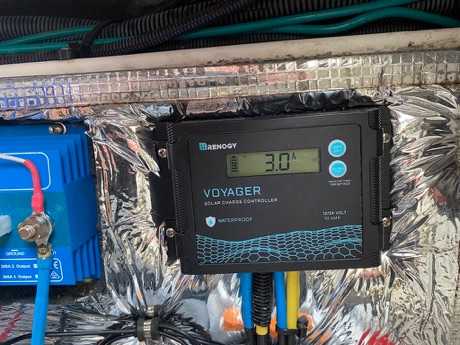
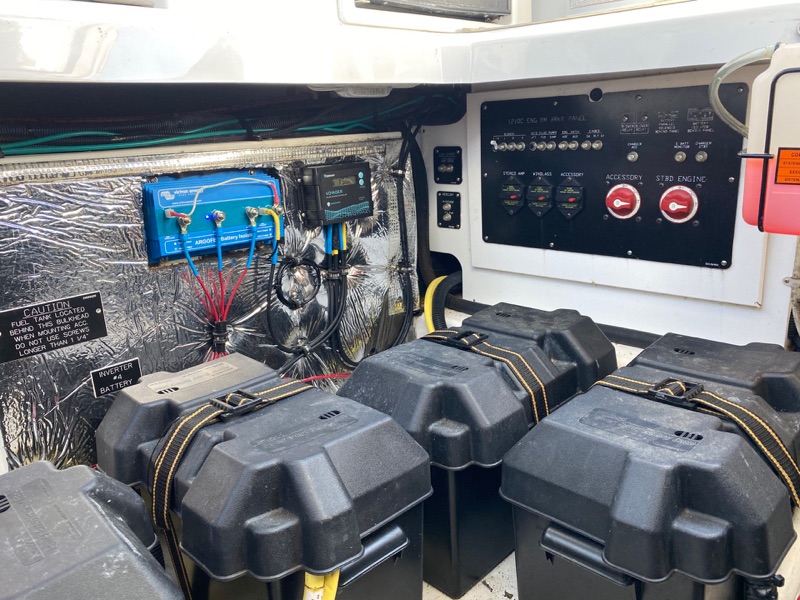
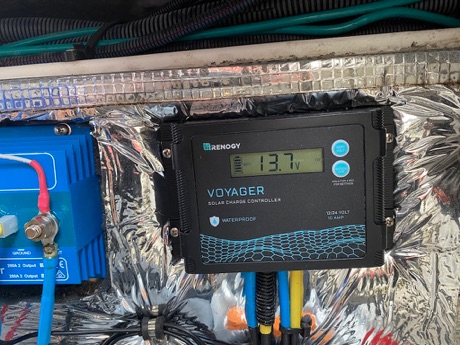
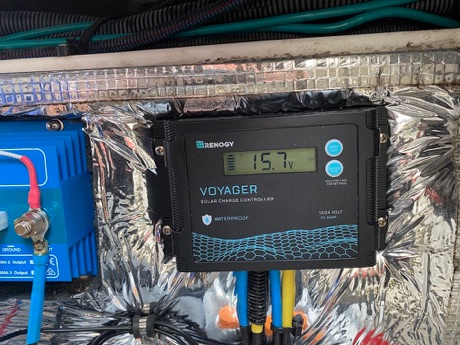
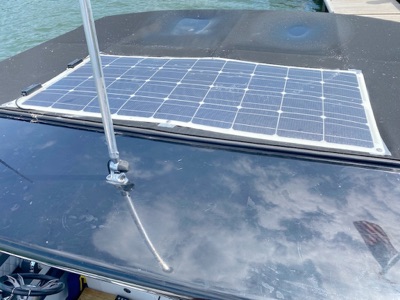
The electrical system on the New-2-Me boat was at a much higher level of complexity than anything I had seen on a boat. In addition to the 7 batteries spread across 4 ‘banks’, there were all kinds of isolators, relays, circuit breakers, and switches. Since the boat would be on a mooring during the season, away from any shore power, I wanted to add a solar charging system to keep the batteries fresh.
I went with a Renogy 100 watt system, which consisted of a 100 watt panel and 10 amp controller. I also needed to add an ‘FET’ battery isolator to be able to charge the multiple banks of batteries from a single controller. It took a bit of electrical engineering to get it all to work, but in the end the FET isolator was energized by the controller, which was fed by the solar panel. So, the system turned itself off at night and re-activated upon daylight.
I mounted the solar panel on the soft-top and fed the wiring down inside the arch to the main electrical panel in the engine bay.
Here are a few pictures of the solar charging system all mounted and operational. The FET isolator is the light blue heat sink thingy in the pictures.
Once the system had stabilized, I was getting 15+ volts from the panel in full sun, which had the controller at about 13.7 volts and 3.0 amps to the battery banks. The most I saw was about 4.6 amps.
The nice thing about the FET type of isolator is that it has a very low voltage drop vs. a diode/rectifier device, and is simpler than an ACR (relay) (IMO)
For those following along and doing the math, you can see that the net power to the batteries is no where near the 100 watts of the system rating. More like 50-60 watts based on my observations. Not an issue though, as even 60% of the 100 watts was plenty to keep the batteries fully charged and even bring them up to charge as needed.
Internal power leakage within a typical auto/marine battery is about 25 milliamps (ma). With 7 batteries, (7 x 25ma) = 175 ma (0.175 amps) would be required to ‘maintain’ the batteries at their full capacity, which is only a small fraction of the net power from the system (about 2.6 watts).
So, it was all good. . . the system had plenty of power to keep the batteries charged even when using power during the day while anchored at the sandbar, etc.
Panel Voltage
Controller
Output
Voltage
Panel Amps
Solar Panel
System
Installation
